Hot topics of 2016
These five trending topics hint at important discoveries to come.

Beyond the big headlines in autism research this year was a steady stream of studies hinting at important discoveries to come. Here’s a look at some trending topics that are likely to surge in the years ahead.
Weighty matter
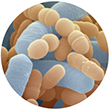 Many chronic health conditions can accompany autism. Mounting evidence reported this year suggests that children with autism are at risk for obesity, diabetes and related health problems. One possible source of this susceptibility is the use of antipsychotic drugs that ease autism features.
Many chronic health conditions can accompany autism. Mounting evidence reported this year suggests that children with autism are at risk for obesity, diabetes and related health problems. One possible source of this susceptibility is the use of antipsychotic drugs that ease autism features.
Researchers also identified some ways to ward off obesity in people with autism. A popular drug for diabetes appears to counter weight gain in children with the condition who take antipsychotic medications. And the age-old therapy for excess weight — exercise — may have added benefits for social skills and other behaviors.
Obesity and diabetes may also contribute to the risk for autism. Women who have diabetes or who are obese while pregnant have an increased chance of having a child with autism. The possibility is greater still for women who have obesity as well as a hormonal disorder called polycystic ovary syndrome.
The immune system may factor into the link between maternal metabolic conditions and autism. Pregnant mice that are obese have altered levels of gut microbes, which contribute to autism-like behaviors in their pups. Certain autism-linked immune molecules are especially common in women with gestational diabetes who have a child with autism.
Multiplying mice
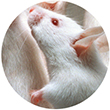 Autism researchers added several new mouse models to their arsenal this year. The list includes the first mice to carry a mutation in CHD8 — a top autism risk gene. However, the CHD8 mice show no repetitive behaviors or social deficits, two hallmarks of autism in people. The mice debuted in May at the 2016 International Meeting for Autism Research in Baltimore.
Autism researchers added several new mouse models to their arsenal this year. The list includes the first mice to carry a mutation in CHD8 — a top autism risk gene. However, the CHD8 mice show no repetitive behaviors or social deficits, two hallmarks of autism in people. The mice debuted in May at the 2016 International Meeting for Autism Research in Baltimore.
In September, a team of Japanese researchers described a second strain of mice missing CHD8. Unlike the first set, these animals show subtle social oddities and behavior reminiscent of the restricted interests seen in people with autism.
Yet another strain of CHD8 mice debuted in November at the 2016 Society for Neuroscience annual meeting in San Diego. Like the first strain, these animals do not show social deficits. At least two other teams reportedly have their own CHD8 mouse models in the works.
Researchers also made mice with various glitches in SHANK3 — another gene with strong ties to autism. One group developed mice missing a single copy of the gene, and another team made mice that lack both copies. Two additional strains of mice offer clues to why a certain SHANK3 mutation raises autism risk whereas another mutation is associated with schizophrenia.
Many of the teams making mouse models of autism send the animals’ brains to a pair of researchers in Canada for further analysis. Their hope is that detailing how these various strains are similar and different will shed light on autism’s heterogeneity.
CRISPR changes
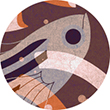 This year saw no end to the heated legal fight over the patent rights to CRISPR, a widely popular gene-editing tool. Two institutions — the Massachusetts Institute of Technology and the University of California, Berkeley — lay claim to the tool’s patent. All year long, legal representatives for the two teams argued their cases in court.
This year saw no end to the heated legal fight over the patent rights to CRISPR, a widely popular gene-editing tool. Two institutions — the Massachusetts Institute of Technology and the University of California, Berkeley — lay claim to the tool’s patent. All year long, legal representatives for the two teams argued their cases in court.
In the lab, researchers tweaked the technique in numerous ways. Instead of simply changing DNA sequences, they can now use modified versions of CRISPR to turn off genes, trace the origins of cells, track the locations of proteins inside cells, and remove or duplicate large swaths of DNA. Researchers can also use CRISPR to cut RNA, and can turn the tool on and off at particular time points using a drug.
The other 98 percent
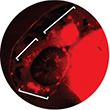 Researchers have thoroughly mined the protein-coding stretches of the genome for mutations tied to autism. But these swaths of DNA only account for about 2 percent of the genome. This year, researchers made preliminary forays into understanding autism’s links to mutations in the remaining 98 percent of the genome.
Researchers have thoroughly mined the protein-coding stretches of the genome for mutations tied to autism. But these swaths of DNA only account for about 2 percent of the genome. This year, researchers made preliminary forays into understanding autism’s links to mutations in the remaining 98 percent of the genome.
One group found mutations just outside the coding regions of the genome in people with autism but not their unaffected parents. Another team reported that more than one-third of spontaneous mutations found in people with autism occur in noncoding regions.
Yet another group of researchers homed in on noncoding patches called ‘human accelerated regions,’ which are unique to people. They discovered that individuals with autism tend to carry mutations in these spots.
Family features
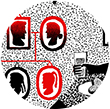 Subtle features of autism often crop up in relatives of people with the condition. Large studies this year confirmed that younger siblings of people with autism are more likely to have early difficulties than children with no family history of autism. And one of the first studies of Hispanic families showed that parents of children on the spectrum often show autism features themselves.
Subtle features of autism often crop up in relatives of people with the condition. Large studies this year confirmed that younger siblings of people with autism are more likely to have early difficulties than children with no family history of autism. And one of the first studies of Hispanic families showed that parents of children on the spectrum often show autism features themselves.
Studying how autism traits aggregate in families can offer clues to the condition’s heritability. This year, a team of researchers began enlisting the help of grandmothers to explore how autism is passed down through families. These women have raised a child with autism and may be well positioned to see signs of the condition in the next generation.
Other research unveiled this year suggests that people who have autism tend to pair up more often than would be expected by chance. This nonrandom mating pattern may help to explain why autism often runs in families. It may also increase the prevalence of the condition.
Recommended reading

Expediting clinical trials for profound autism: Q&A with Matthew State

Too much or too little brain synchrony may underlie autism subtypes
Explore more from The Transmitter

Mitochondrial ‘landscape’ shifts across human brain

